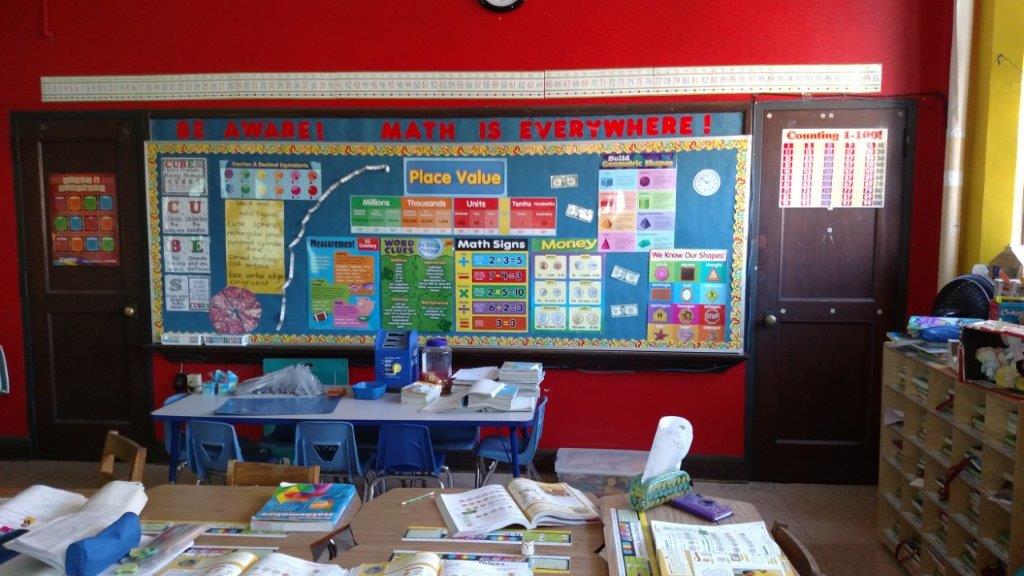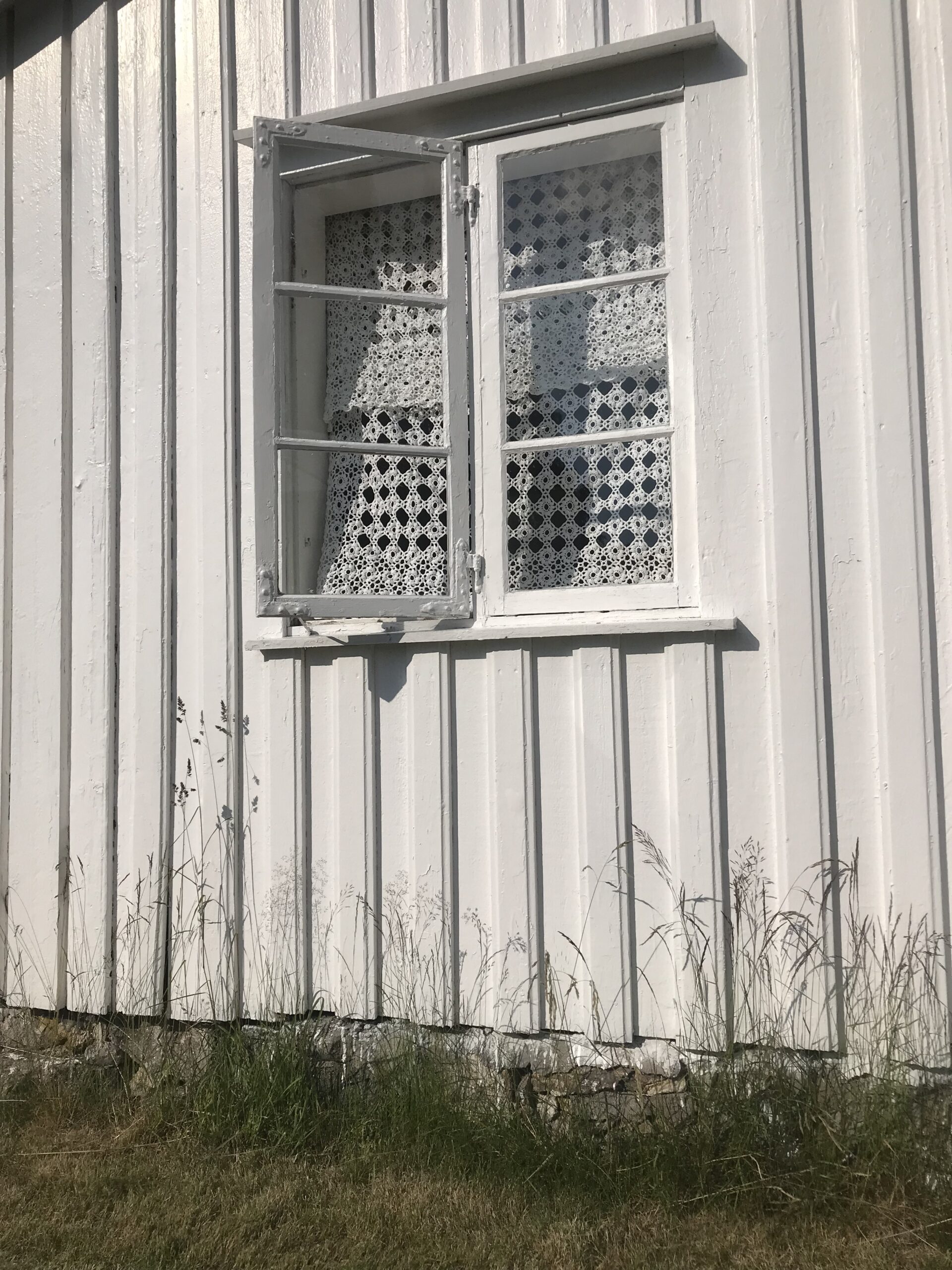
St. Joan of Arc classroom and cloakroom revisited, 2018
Queens, New York
The very sound of it was foreign to our ears. Who wore cloaks? Vampires. Stealthy spies with hidden daggers. And men in top hats who appeared in movies and old-fashioned story books. Certainly no one we knew as first-graders at St. Joan of Arc—except, perhaps, for the nuns whose sleeveless black capes swirled in their hurried winter walks through the schoolyard to the convent. But their habits covered every inch of skin up to their necks; even their brows were partially obscured by fabric stiff as cardboard and white as their bony hands—the only other flesh exposed. So, on second thought, we couldn’t really say we “knew” the nuns when their very bodies were concealed and their lives outside the classroom a mystery.
The cloak room, although part of our daily lives, held its own mystery. A narrow, dimly lit passage at the back of the classroom with a door on each end for entering and exiting, it was a kind of way station, a place to unbundle, to shed the layers in which our mothers swaddled us. Every morning Sister summoned us to the closet—first the boys, one row at a time, and then the girls, for no mingling of the sexes was allowed in that tight, overheated space. Above our teacher’s desk, high on the wall, Christ hung, his feet and hands nailed to the cross. In that setting, our teacher’s commands carried an other-worldly authority that no one thought to question.
Once called, we would hastily remove the quilted leggings, cable-knit sweaters and scarves that covered our maroon uniforms and for the boys, their navy pants and white oxford shirts. In stormy weather, after taking off our boots, we’d sometimes feel tiny nail heads in the floorboards pricking our heels while we breathed the scent of dampness and old wood.
Our bulky outerwear exhaled winter as if alive, still animated by the recent presence of our young bodies, struggling to stay on the long rows of hooks, taking up more room than we did and sometimes falling to the floor in heaps. Even as a six-year-old, I’d hurry to restore order, coaxing my clothing back into position as if bidding farewell to the self I’d inhabited at home, the carapace I’d shed for the school day ahead. The maroon jumper and white nylon blouse with its prim collar were now revealed. That clothing lay close to my flesh but never in comfort. I think of my uniform now as an imposed disguise that cloaked whoever I was becoming. Then I stepped outside wearing the regulation brown lace-up oxfords that I despised and took my place at my alphabetically assigned desk, my hands tightly clasped and poised at its edge as we’d all been instructed to do on the first day.
I’ll never know why I stayed behind with another girl in the cloak room that morning. As we lingered, I discovered the unprecedented pleasure, then joy, of not being missed—hide-and-seek without the seeking. We must have told each other stories, played some quiet games. As the minutes accrued, we gradually realized our predicament. The longer we stayed, the more difficult it became to leave—fear had invaded, turning our haven into a holding pen. I pictured the spectacle of our emerging while a lesson was underway, imagined our shocked classmates, the thunder-crack of the yardstick we had dutifully avoided. And with time came the dawning recognition of my infraction—or was it sin? My uncharacteristic spontaneity had made me a miscreant, a word I didn’t yet know but felt instinctively.
The heavy coats of our 48 classmates brushed our faces, keeping us company in an intimate way that we hadn’t ever experienced, a congregation of children surrounding us, dismissing our guilt. But our classmates were not with us—they were out there, beyond our sight as we were beyond theirs. We could hear only the sound of our teacher’s heavy tread up and down the rows and feel our own quickened breath. No longer sprawled at play on the floor, we now stood side by side, our bodies tense. The next day, as Sister handed out test results, my co-criminal and I exchanged furtive glances, both shamed and relieved that we had missed a surprise quiz.
How we managed to slip back into our places without detection I don’t recall. What I do recall is how frightening it was to be forgotten, how illicit that felt. And how thrilling: two “good” girls who could disappear.
Maria Terrone’s nonfiction has appeared in journals including Witness, Green Mountains Review, Briar Cliff Review, Potomac Review, The Evansville Review and Litro (U.K.). At Home in the New World (Bordighera Press), her first essay collection, will appear in fall 2018. Also a Pushcart-nominated poet with work published in French and Farsi, she is the author of the collections Eye to Eye; A Secret Room in Fall (McGovern Prize, Ashland Poetry Press); The Bodies We Were Loaned, and a chapbook, American Gothic, Take 2.
Location: NYC—in Queens, N.Y.




